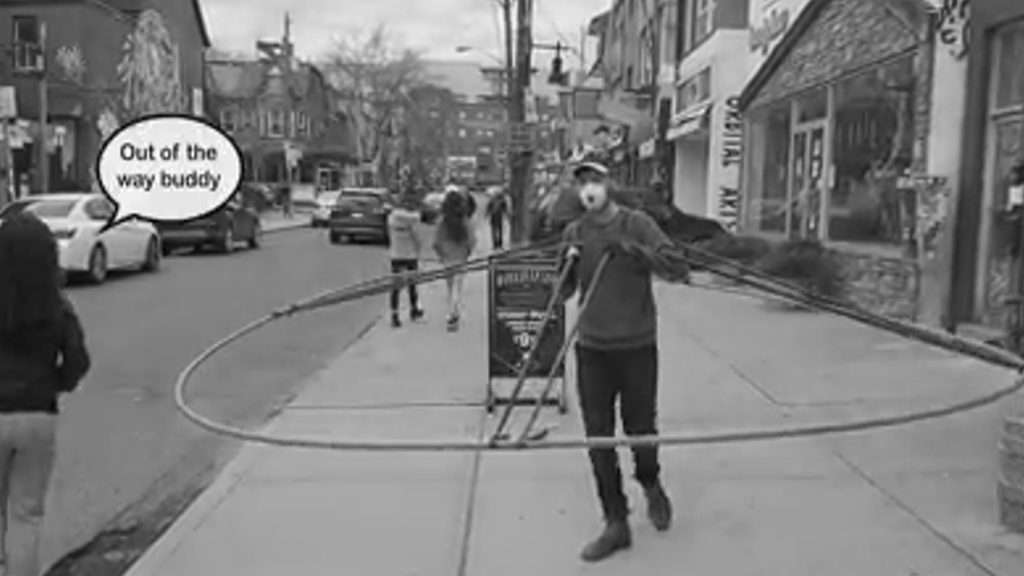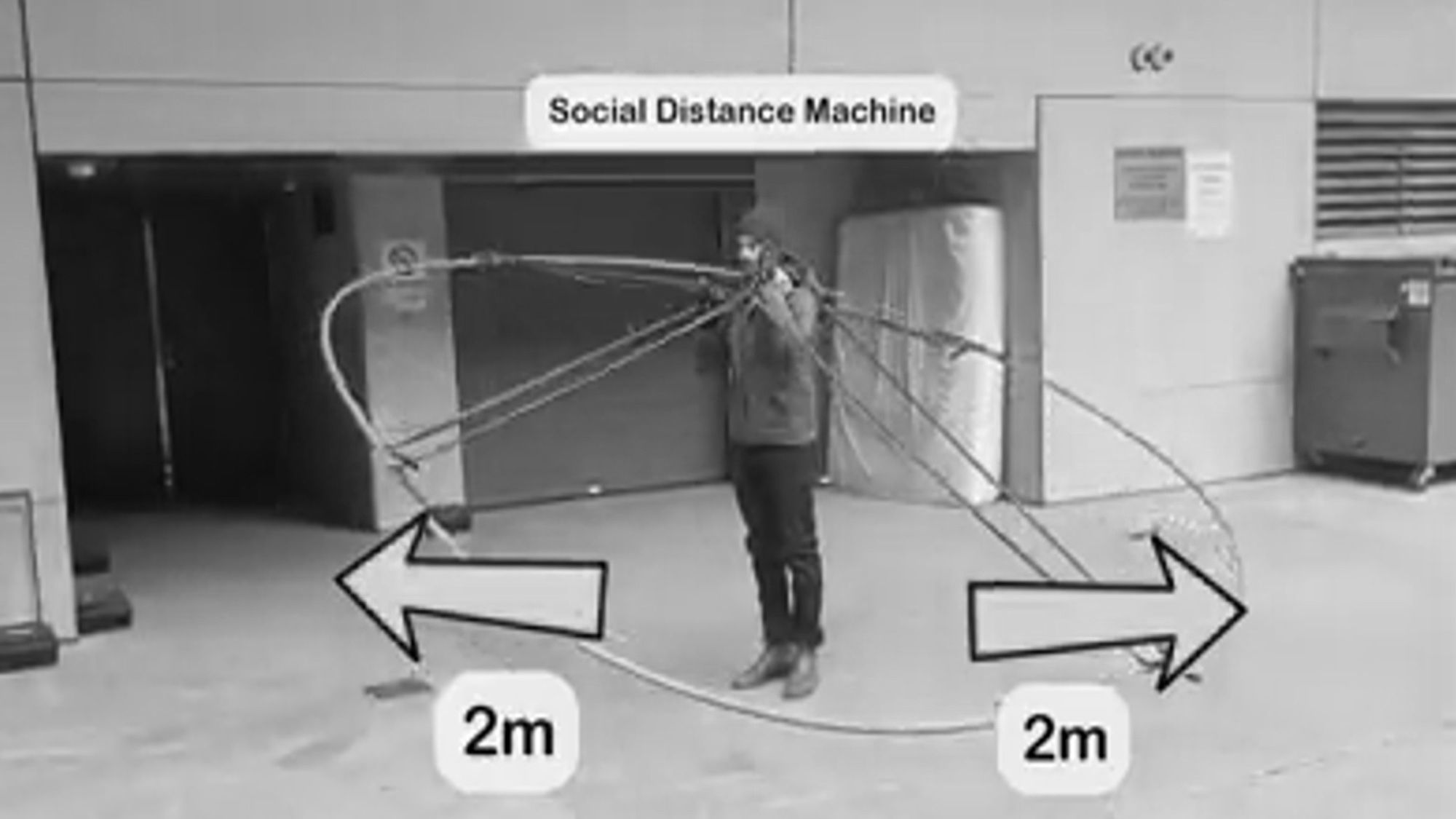An urban geographer in Toronto has shown how difficult it was to keep the two-metre social distance by creating and wearing a so-called social distancing machine in the street.
Urban Geographers work in a field that is a subdiscipline of geography centred around the studying of cities and urban activities and have been increasingly prominent as locked down regions attempt to work out ways to keep people apart.
People living in Toronto are being advised to keep two metres away from each other, but according to Daniel Rotsztain, 30, who created what he called a Social Distancing Machine, this is simply not possible.
A video shows how we built a circle around himself made of plastic pipes and bicycle inner tubes that he wears like a giant hoop forcing everybody coming towards him to keep two metres away.
He told Newsflash: “I realise it’s not very practical, but that’s the point. I wanted to create something visual and fun to show how impossible it is to navigate the streets.”
When he walked for example down Yonge Street which can be seen to have narrow pavements with lots of people he found that it was almost impossible to keep his distance without the aid of the device and that the only way to move at all would be down the centre of the street, underlining the need to close off some roads to traffic.

He said the video online with the message: “Made a Social Distance machine to show why @cityoftoronto needs to close major streets like Yonge during COVID-19. Our sidewalks are too narrow to keep a safe distance. Tell @JohnTory and your local councillors: #streets4peopleTO!https://youtu.be/aXxfKX4tRdw.”
After the video that he created was widely shared, he said the mayor started to change his tone from the earlier stance of refusing to close narrow streets, although he admitted it had not been implemented yet.
But his project is also being taken up by local media, for example by the local “Globe and Mail” newspaper which noted the strategy he recommended rorty been introduced in some other cities, but not Toronto.
They wrote: “While Toronto has rebuffed calls to close streets such as Yonge to cars, even as vehicle traffic has plummeted, other cities have acted.
“In Vancouver, the city banned cars from the road around Stanley Park and parts of Beach Avenue, to make room for pedestrians and bicycles. Montreal opened a “corridor sanitaire” – a health corridor – on a stretch of Mont-Royal Avenue filled with essential businesses in the busy Plateau neighbourhood.
“These cities join others in Canada and around the world making similar moves. Oakland, Calif., has gone the furthest, closing almost 120 kilometres of city streets – 10 per cent of its total – to cars.

Social distancing machine 
Social distancing machine
“The worry of some civic officials in Toronto is that turning streets over to pedestrians could lead to gatherings or street parties. That assumes people are idiots, which they are not. The mayor instead has floated the idea of one-way sidewalks. Single file, everyone!”
They added: “In Toronto, closing a long stretch of Yonge to cars makes sense. So does banning cars or reducing lanes on adjacent streets, in neighbourhoods where thousands of people live in tall condo towers surrounded by narrow sidewalks. It means creating a downtown pedestrian network, so people going to and from essential services and seeking some exercise can safely adhere to physical distancing.”
To find out more about the author, editor or agency that supplied this story – please click below.
Story By: Ana Marjanovic, Sub-Editor: Joseph Golder, Agency: Newsflash
The Ananova page is created by and dedicated to professional, independent freelance journalists. It is a place for us to showcase our work. When our news is sold to our media partners, we will include the link here.




